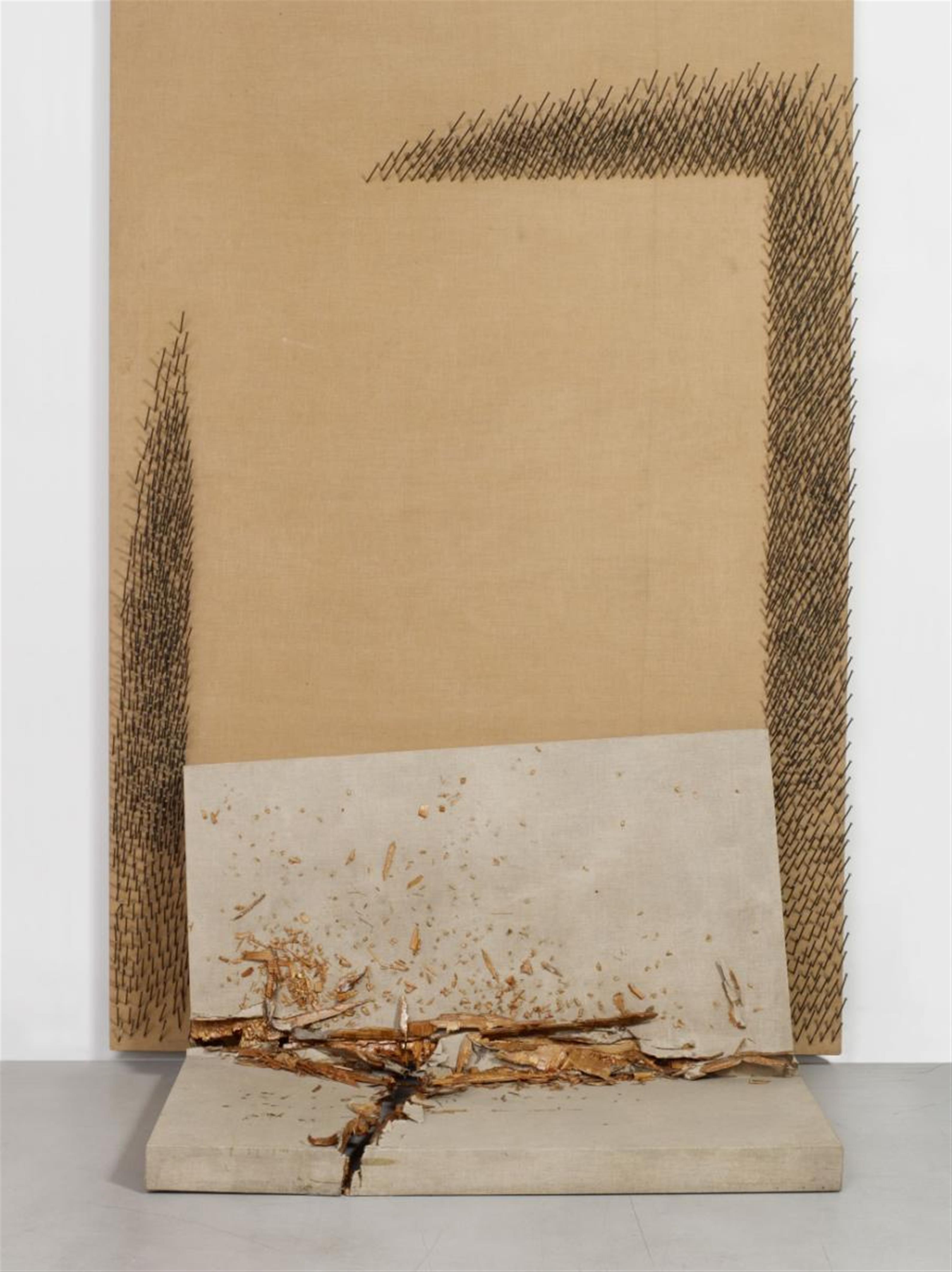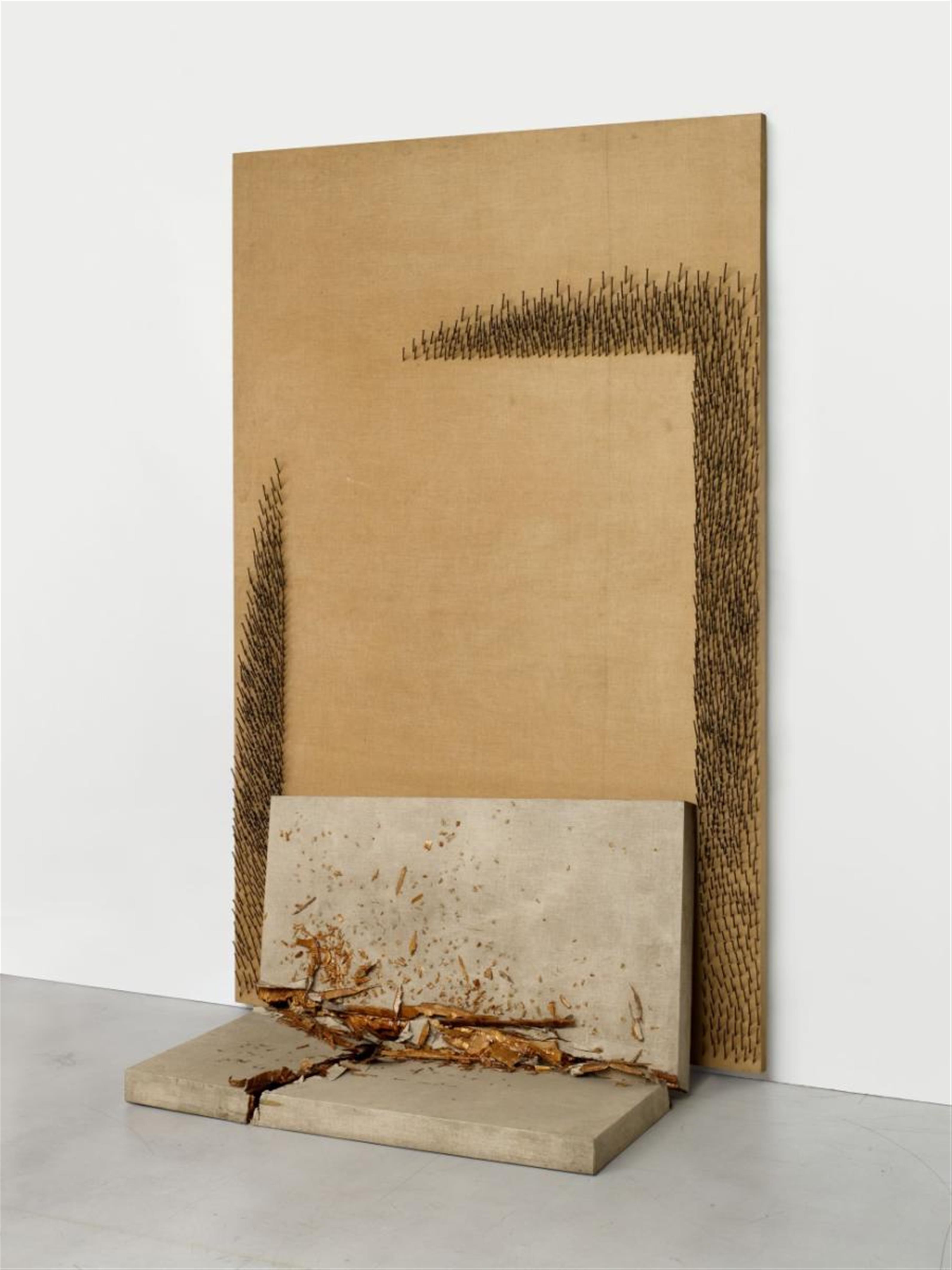Günther Uecker
Abgesunkenes Feld
Installation: nails on canvas on panel and split wooden element. Installation dimension approx. 300 x 192 x 110 cm. - Traces of studio and minor traces of age.
'For Uecker, the nail is […] the world's concentration on one single spot. Uecker's nail is a tool and a weapon. And a reason to think. An impulse to change set ways of thinking and seeing'. (Wieland Schmied, Uecker, St.Gallen, 1972, p.31)
The first utilisation of the nail in the mid 1950s marks a turning point in Uecker's oeuvre - the break with panel painting - and firmly positions the artist in the structure of the international avant garde of the 1950s/1960s. His affiliation to the ZERO group as from 1961 and his personal contact as well as the artistic involvement with revolutionary artists such as Yves Klein and Lucio Fontana give Uecker important impulses for the development of his characteristic pictorial vocabulary. There is a special congeniality between Uecker's nails and Fontana's slashed and perforated canvases: with the 'injury' and the spacial extension of traditional picture carriers, both artists successfully question the conventions of painting and at the same time discover formal and conceptual solutions for a start into a new artistic age. Uecker's particular achievement is to slur the classic demarcation between painting and object even more radically than Fontana had done. This symbiosis of genres, which is also evident in the present work Abgesunkenes Quadrat, becomes manifest early on in Uecker's famous work Das gelbe Bild (1957/58). Here, the artist has studded the edges of the monochrome painted canvas with nails in regular intervals, so that the corporeity of the picture carrier is emphasised by the circumferential ring of nails and thus becomes an independent work theme. Considering Abgesunkenes Quadrat, which originated 20 years later, the persistent pursuit of this concept is obvious. Uecker here decidedly stresses the three dimensionality of the impressive installation, takes up the classic square panel painting, and at the same time declares it obsolescent: where once was the picture carrier, there now is an empty space on the wall element; the picture carrier itself has subsided and is lying in fragments on the floor. The nails have emancipated themselves from the picture carrier and retrace its contours on the wall. The installation seems like a reflective commentary by the artist on the development of his works. The particular significance of this work is reflected in its comprehensive exhibition and publication history: the work is to be found, among others, in the Brunswick exhibition catalogue of 1979, in the Uecker monograph by Bernhard Holeczek and Richard W Gassens (1987), and as a pictorial contribution to an interview with Uecker which was conducted by Heinz-Herbert Jocks for the magazine 'Kunstforum' in 1992.
Catalogue Raisonné
Honisch 936, p.146 with illus.
Certificate
With accompanying signed photo certificate from the artist dated 2014
Provenance
Galerie Denise René / Hans Mayer, Düsseldorf
Literature
Heinz-Norbert Jocks, Günther Uecker, Kann Fruchtbarkeit auf Asche gründen?, in: Kunstforum, Parallele Kunst, Vol.117, 1992, p.307 with colour illus.
Bernhard Holeczek, Richard W. Gassen, Uecker, Heidelberg 1987, p.122 with illus.
Exhibitions
Braunschweig 1979 (Kunstverein), Günther Uecker, Bilder und Zeichnungen, exhib.cat.no.56




